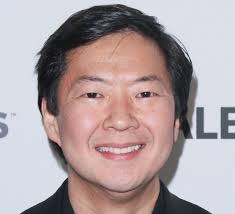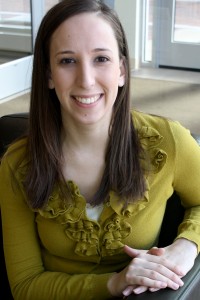
By Ben Murray
During my time at Baylor, I’ve heard a variety of opinions regarding the city of Waco. For many people, Waco is great. They like the rural beauty, nice people and small town vibe. Others, however, complain that there’s little to do outside of school and have even gone so far as to call this place downright boring. Well, to all the Waco haters out there: maybe this city is boring. Maybe it’s a run-down little town with nothing to do in it except stare longingly at the sky wishing you were in Austin or Dallas. A place where fun cannot be found, happiness is impossible, and good times are expressly forbidden. Or maybe, just maybe, you’re a boring person who hasn’t given Waco a chance. It’s time to remember that we live in a unique location with its own set of attractions. It’s time to recognize the 7 wonders of Waco.
- McLane Stadium
In case you’ve been on a media fast for the last few years, let me introduce you to what has become the crown jewel of Waco. I’m talking about an 860,000 square foot, $250-million-dollar shrine to the greatness of Baylor football. It is one of the most modern, high-tech stadiums in college football to date and it is where you can find more than 45,000 screaming fans every game-day during the season. The new location features 93 acres of tailgate space, a 5,018 sq ft scoreboard, hundreds of concession stands, escalators, elevators, sail-gating and more—all within walking distance of campus. Though it has only been open for a year, McLane Stadium has already begun to make history as the site of the Bears’ second consecutive Big 12 Championship and what has to have been one of the greatest comebacks to ever happen in collegiate sports (61-58). McLane Stadium is more than just a place to play football. It is the spark of a revolution taking place at Baylor and in Waco. The stadium is the largest project in the history of Central Texas and has the potential to transform the city—creating new hotels, restaurants, and shops for the game-day crowds along with nearly 6,000 jobs in its first year alone.
- George’s
One thing that big cities have over Waco is a vast array of dining options. But who wants to go to some stiff, cookie-cutter, chain restaurant for every meal out? Though Waco has several food gems, there is one place that stands above the rest. George’s Restaurant and Bar has been filling the stomachs of Wacoans for 85 years. With a track record that long, how could it not be awesome? The restaurant serves everything from burgers and fried chicken to quesadillas and catfish—all of which are good. They’ve been in the same building all these years, so the atmosphere has a warm “broken in” feel that is just plain comfortable. When you sit at one of the old, scratched up tables eating a placemat-sized chicken fried steak and gulping down a “Big O” (an Arthurian goblet of beer unique to George’s), you can almost sense the generations of Baylor students who did the same exact thing years before you. To put it simply, George’s is a special place. There is no better location to watch the game and have a few beers with friends. Just make sure to get there early.
- Cameron Park
Many undergrads make the mistake of neglecting to explore the natural beauty that can be found in Waco. One useful way to keep your head from exploding due to coursework is to take a trip to Cameron Park. More than 100 years ago, the William Cameron Family donated the 400-acre park to Waco and residents have been enjoying it ever since. Located right along the Brazos River, Cameron Park features a zoo, disc golf courses, picnick areas, hiking/biking trails and scenic views which are excellent for life contemplation. The park also holds parties, festivals and other events on a fairly regular basis. It’s a great place to go for a run or just hang out and it offers a much-needed escape from the daily grind. If you’re not visiting Cameron Park on a weekly basis, you’re missing out—it’s a five minute drive from campus!
- The Hippodrome
Are you fond of food, drink, movies, live entertainment or historic buildings? What if I told you that all of these great things could be enjoyed simultaneously in the same spot? For those of you who aren’t aware, The Hippodrome offers all of these amenities to Wacoans every day of the week. Here’s the coolest part: the theatre’s opening night was just over 100 years ago in 1914—featuring a live seal act, a magic act and a five-piece orchestra. This stately theatre has gone through its fair share of closings and openings, but it seems to always land back on its feet. In 2012, local developers Shane and Cody Turner bought the place, renovated it, and re-opened its doors in 2014. The Hippodrome now has a retractable wall that allows for two films to be shown at the same time. It also features two kitchens, a concession stand, a full service restaurant and a bar on the 2nd floor. So next time you’re looking for something to do, head on down to 724 Austin Ave. and catch a show!
- Dr. Pepper Museum
What is the oldest major-brand soft drink in America? If you guessed Coca-Cola, YOU GUESSED WRONG. Dr Pepper holds that claim and this beloved soda was originally concocted in…..you guessed it…. Waco, Texas. The beverage was conceived at Morrison’s Old Corner Drug Store in the late 1800’s by a young pharmacist names Charles Alderton. The Dr Pepper Museum commemorates Alderton’s accomplishment and features a multitude of artifacts from Dr Pepper’s historic life. Opening in 1997, the Museum is home to the W.W. Clements Free Enterprise Institute that educated people about the economic system that underlies American life. Though I can’t say the Dr. Pepper Museum can provide you with hours of entertainment on a regular basis, it is certainly worth checking out.
- Suspension Bridge
As far as Waco scenery goes, this one has got to be near the top. It sounds corny, but there’s a reason every single sorority event takes pictures here. It is beautiful. The 3-million-brick bridge spans 475 feet across the Brazos River and has been there since 1869. To give you an idea of how old that is, travelers along the Chisholm Trail had to use a ferry to get across the river before it was built. Today, the bridge is not as crucial as it used to be. But it’s an awesome place to stare dramatically at a sunset, propose to a future spouse, or yell at boaters. Also, for those grad students who aren’t familiar with Baylor traditions, I should probably mention tortilla tossing. This activity is exactly what it sounds like and can be performed in three simple steps: 1. Buy tortillas 2. Go to the Suspension Bridge 3. Throw tortillas off the Suspension Bridge and try to land them on the pillars sticking out of the river. If you’ve always wanted to insanely throw Spanish flatbread off a high place without judgement, now is your chance. NOTE: The Baylor Graduate School does not condone yelling at boaters, wasting food or staring at the sun. These are merely a collection of possible activities that can be performed at the Suspension Bridge.
- Dichotomy
If you’re a coffee lover, you may surprised to hear that some of the best coffee in the U.S. can be found right here in Waco. Then again, if you’re a coffee lover, you’ve probably already done your research and are infinitely more aware of the exact ingredients that go into Dichotomy’s drinks than I am. All that aside, Dichotomy is a relatively new coffee shop/bar that has already begun to be seen on “greatest coffee shop” lists. Though I’m no coffee drinker myself and know nothing about the process of making coffee, I can tell you a few things about the place. First of all, it looks really cool inside. The place has a 40’s drugstore vibe mixed with a modern aesthetic. There’s a massive marble bar that covers most of the downstairs—complete with a bunch of brass, steampunk-looking contraptions and laboratory glassware that I can only assume are essential for crafting fine coffee. The shop is manned by a team of friendly coffee fanatics who look like they would get along well with Mumford and all of his sons. There’s also an area with tables that is great for studying and an upstairs porch that offers a scenic view of downtown Waco. Bottom line: If you like coffee, you will like this place.
And there you have it: The 7 Wonders of Waco. Now, get off the couch and start exploring!









 The award recognizes students that have a vision for impacting policy and science. Zack first learned of the award opportunity at a conference in Long Beach, CA, where he won an elevator speech contest. An advocate for the ASA, CSSA, and SSSA Future Leaders in Science Award was impressed by Zack’s speech and encouraged him to apply. Good thing he followed his advice! As this year’s winner, Zack will enjoy an all-expense paid trip to Washington, DC to participate in the 2015 Congressional Visits Day in March where he will receive advocacy training and meet with Congressional representatives.
The award recognizes students that have a vision for impacting policy and science. Zack first learned of the award opportunity at a conference in Long Beach, CA, where he won an elevator speech contest. An advocate for the ASA, CSSA, and SSSA Future Leaders in Science Award was impressed by Zack’s speech and encouraged him to apply. Good thing he followed his advice! As this year’s winner, Zack will enjoy an all-expense paid trip to Washington, DC to participate in the 2015 Congressional Visits Day in March where he will receive advocacy training and meet with Congressional representatives.